Peter Asher has such an impressive resume, it’s hard to believe that one person could’ve done it all.
He first came to fame as part of the British Invasion duo Peter & Gordon, whose 1964 single “A World Without Love” by Paul McCartney (attributed to Lennon/McCartney) went to Number One in the UK, US, Canada, New Zealand, and Ireland.
The Beatles connection continued when he become the head of A&R for Apple Records, and in this capacity Asher signed James Taylor to his first record deal and produced his first record. When Taylor decided to move back from the UK to the US, Asher came along as his manager, and produced and contributed to Taylor’s acclaimed albums in the 1970’s and beyond.
Asher also became Linda Ronstadt’s manager, and produced a number of her hit albums including Heart Like a Wheel, Hasten Down the Wind, What’s New (recorded with Nelson Riddle), and Canciones de mi Padre (Linda’s first mariachi album).
As if that wasn’t enough, he also produced albums by Cher, 10,000 Maniacs, Neil Diamond, Robin Williams, and many others. And he co-founded the notable 1960’s counterculture Indica Bookshop and Gallery in London, and the Roxy Theatre on the Sunset Strip in Los Angeles. Oh, and he was the inspiration for the look of Austin Powers.
This interview with Peter Asher was for a preview article for noozhawk.com for his 6/23/18 show with Albert Lee at SOhO in Santa Barbara. It was done by phone on 6/12/18. (Joe Carducci photo)
Jeff Moehlis: Do you remember when you first crossed paths with Albert Lee?
Peter Asher: No, I don’t actually. I heard of him before our paths crossed. We all had heard of him being a great player, and Linda Ronstadt knew his playing as well. He played with Linda from time to time. He was never in our official band on the road, but I remember seeing him sit in with Linda somewhere early on in her career, when I was just starting to manage her. So I don’t remember quite when it changed from hearing about him, to being a fan, to getting to know him and being a friend. It was a gradual process.
JM: Going way back, do you remember what your initial reaction was when you first heard Paul McCartney’s song “A World Without Love”?
PA: Yes, I thought it was a very good song. It wasn’t finished. I might’ve overheard him playing it – you know, we were sharing the top floor of our family home at that time, so our bedrooms were next to each other. But I remember commented that it was a good song, and Paul explaining to me that it was not finished, that the Beatles probably weren’t going to record it, and it was kind of a leftover.
And that’s how it remained until when Gordon and I got a record deal, quite independently – we were spotted in a club and signed up in a very traditional manner. But it was when we were looking for songs for our first session that I went back and asked Paul if that song was still an orphan, and whether we might be able to adopt it, and he said “Yes”.
JM: I read that you were one of the first people to hear the song “I Want to Hold Your Hand”. What do you remember about that?
PA: That’s kind of a very general question. I mean, I remember it being an amazingly good song. You know, you hear a song and go, “That’s really good” [laughs]. It was astounding.
I’d heard both of them [John and Paul] sing and play before. They were sitting side by side on the piano bench, so no guitars. It was a piano song at that stage, interestingly. It was written on the piano. They were very impressive. Paul and John both sang really well, and really loud, too. I think all that practice in Germany.. You know, this was before monitor speakers or any of that stuff had been invented, so if you wanted to be heard you sang powerfully, and they certainly did. They were hammering full-on on the piano, but the vocals were plenty loud on top. So in a small basement music room it was an amazing experience, and it was a great song.
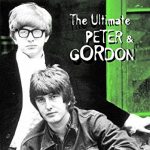
JM: What are some memories of the first US tour as Peter & Gordon?
PA: The very first date we did was in New York. I remember arriving in New York – that’s where we hit America for the very first time. Quite apart from the music and the tour and the hit record and all that, just being in America, visiting America was legendary for us. Everybody dreamed about America. It was somewhere we only saw in movies and television, and somewhere where all the music we loved came from. At that point, it was a very far away place. It was difficult and expensive and time consuming to get there. Now, people nip off for a week’s holiday in Florida without thinking twice. That was far from the case back in those days.
I think the most impressive thing was “we’ve arrived”, that there’s the New York skyline. I had a poster of the New York skyline on my wall. I had copies of Downbeat with all the jazz clubs I wanted to visit when I finally made it, listed and circled in ink.
One of our earliest gigs was at the New York World’s Fair, whenever that was – it must’ve been ’64, I suppose – playing at the Unisphere, that skeletal metal globe. It’s still there. That was the center of the New York World’s Fair, and we played at that globe-y thing, at the Unisphere. There was a moat between all the seats and the stage, and all the screaming girls jumped in the moat and waded across in order to attack us on the stage. It was kind of like an early wet T-shirt contest. It was very exciting.
JM: You were a co-owner of the Indica Bookshop and Gallery. What was the original vision for that?
PA: The bookshop came first, which was Barry Miles and me. We wanted to be a counterculture bookshop. We were all versed in the Beat Movement. We’d all read On the Road. I’d actually read Allen Ginsburg’s Howl in the school poetry reading competition at one point, which caused a bit of consternation. I suppose if we had a role model it was like the City Lights Bookshop in San Francisco, and Lawrence Ferlinghetti and all that.
A little while later – I guess a few months, I’m not sure – we opened the art gallery in a separate location, which I was less involved with because I am more enthusiastic about books than I am about art to this day. But that was John Dunbar’s area of expertise, and put on some interesting art exhibitions.
JM: A little bit later you became the head of A&R for Apple Records. How did you decide who to sign?
PA: I had weekly A&R meetings with as many Beatles as wanted to show up. We listened to all the thousands of tapes we were sent, and never really found anything. So in some cases they were brought in by a Beatle, you know. You sign the artist because you think they’re good, and you think they can be successful. That’s how you decide.
But in each case the story was different. Mary Hopkin we saw on a TV talent show. The supermodel Twiggy, back when there was only one supermodel, called Paul and said, “There’s this girl on TV singing a Joan Baez song. She’s got a beautiful voice – you should listen.” And Paul called me and said the same thing. And we went to Wales and signed her up. We signed the Iveys because Mal Evans, the Beatles’ roadie, found them. James Taylor obviously I found and brought in. Jackie Lomax was a friend of George Harrison. So in each case it was a different story and a different set of reasons.
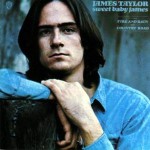
JM: Speaking of James Taylor, who you ended up managing, what was he like when you first met him? And did you have any sense that he would become the big star that he did?
PA: I did. I thought he would be a big star. I thought he would be very successful. I didn’t know how big. I think at the time we were thinking just the folk world. So if he could sell out The Troubadour and The Bitter End for a week, that was being a big star in that world. I don’t think I saw him on the cover of Time Magazine, but I did think that he was unbelievably good, and I thought there would be enough people who would share that opinion that he’d do well.
JM: How did you get involved with producing Linda Ronstadt’s records?
PA: She had originally talked to me, I think, about management. She was leaving her manager Herbie Cohen. And then, at that time, she was stuck trying to finish the record Don’t Cry Now. She’d worked with a few different producers, a couple of whom were boyfriends or ex-boyfriends, and it all got a bit confusing. So I helped her finish that record and get it unmuddled, as best I could. And during that time she asked me if I wanted to produce the next record. So that was the first one I did from scratch, Heart Like a Wheel. That worked out well, so we continued the same arrangement.
JM: What’s your favorite Linda Ronstadt album? Or is that easy to answer that question?
PA: No, it’s not. All this favorites business… I mean, how do you compare that album, particularly in Linda’s case, with the Nelson Riddle album or with the mariachi album? You can’t.
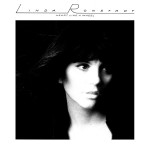
I suppose if I was forced I would say Heart Like a Wheel just because it was the first and the most exciting, and became so huge. “You’re No Good” was a Number One hit and all that stuff. But do I think it’s a better album than the Nelson Riddle album or the mariachi album, or any of the brilliant things that Linda’s done? No, I would never make that comparison.
JM: One that I really enjoy is the Mad Love album, which was a little more of a rock ‘n’ roll album. What are your reflections on that particular album, and how it was received?
PA: I don’t worry too much about how an album’s received. I think people thought we were jumping on the punky bandwagon, and we were. But not because it was a bandwagon, but because we loved the music. I mean, Linda’s all about songwriters. So when she hears Elvis Costello and goes, “This guy’s brilliant, I want to do some of his songs,” it’s not because he’s the new cool thing, or because he’s punk. It’s because he’s a brilliant songwriter. So that’s why. And then, yes, you get people going, “Oh, she’s obviously jumping on a bandwagon.” Well, if liking some brand new artist or brand new music that you’ve discovered is jumping on a bandwagon, then so be it. That’s what happens – you hear new music and go, “This is brilliant. I love it. I want to be part of this. I want to sing it.” And being Linda, she can sing anything better than everybody else [laughs], so why not?
JM: You’ve worked with a number of artists over the years. In addition to James Taylor and Linda Ronstadt, are there any others that particularly jump out at you that you’re very proud to have worked with?
PA: I mean, all of them really. That’s hard to say. There are no records I regret having done, so I think I’m proud of all of them. It’d be hard to pick and choose. You can’t choose between Natalie Merchant or Diana Ross or Cher or Neil Diamond. I mean, it’s a list of people who are astoundingly good, each in their own right. I’m very lucky in that regard. So I’m proud of all of them.
JM: What advice would you give to an aspiring musician?
PA: Just keep at it, and say “yes” to everything. People are always asking me, “Should I be concentrating on live gigs, or should I be spending more time in the studio?” The answer is “yes”. Take every gig you can get. Don’t be snooty if somebody asks you to play at a wedding. Say “yes”, because one person could hear you and go, “Wow, that’s good. Let me look into that person. Let me see who that is and check them out.” Of course it’s so easy to do – they just look you up online and find your music. Don’t worry too much about what you should be doing. Basically do whatever comes your way, and keep doing it.
I mean, you look at someone like Ed Sheeran. He’d done something like 2000 gigs before he got signed. He was, again, playing on street corners, and accepting gigs, and opening for people. Same with James Taylor when we began. You know, I just wanted to get him in front of people. I remember accepting a date once where he was opening for The Who. This was when James was just acoustic, by himself. Everyone went, “You’re crazy.” Well, yes and no. There he was playing to 10 or 15 thousand people, and yes, it was really tough. You know, he was an acoustic guitar player, and probably more than half the audience wasn’t paying attention. But, nonetheless, if 1000 people right down in the front squashed against the stage discovered James Taylor, that’s a lot more than he would’ve playing to in the folk club next door, which would’ve been 100 people. So the answer is, get your music out there, and if you’re really good it will happen, just like it happened for James, just like it happened for Ed Sheeran on an even larger and more impossible scale.
JM: You also helped to start the Roxy Theatre on the Sunset Strip. What did you learn from that experience?
PA: That it was hard. But we had Elmer Valentine looking after that aspect of it. The partners were Lou Adler, Elmer Valentine, myself, David Geffen, and Elliot Roberts. I don’t think I would’ve taken it on had I had to actually run it myself, but Elmer Valentine obviously had run the Whisky for 5000 years, or however long he ran it for – he knew that business inside out. So we were very fortunate in that regard.
I think you need a particular expertise. It’s like what everyone says about the restaurant business, and how hard it is because of staff problems and these problems and those problems. Luckily I didn’t have to deal with those. I made sure it had a great soundsystem, I made sure we were booking good acts, but I didn’t worry about hiring and firing waitresses. That must be a nightmare. So, I think I learned not to take on things you don’t know how to do, which is a good rule.
JM: You’ve worn many hats in the music business over the years. Is there any of those that you found most fun?
PA: I think what I find most fun in the multitude of hats. If I had to choose… In a way I do think it’s kind of a silly question. What I like is the fact that I have been able to be a record company executive, an artist, a manager, a producer. The more I do the more I learn. If I was restricted to one thing only, it would probably be producing records. I very much enjoy being in the studio. But I’d miss all the rest of it if I didn’t do it. Now I do gigs, plus I have a radio show, plus I do all this other stuff. So what I do enjoy the most is the diversification.
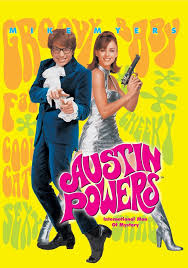
JM: My last question for you is a silly question. Mike Myers has said that you were an inspiration for Austin Powers. Besides your look from the ’60’s, what’s the most Austin Powers thing about you?
PA: Well, it’s an interesting question because, yes, I was an inspiration for the character. Some photos of me were clearly and confirmedly an inspiration for the look of Austin Powers. It’s the glasses, the bad teeth, and floppy hair and all that stuff was me in some pictures back then. So, not to say that I’m not shagadelic, for sure, but I don’t think much of the character derived from me. Sadly, I can’t compete with Austin Powers in the lady-killing business, though I did OK. I suppose the look of it and the Englishness of it. I’m not sure what else Austin and I have in common. Self-confidence I suppose, but him more than me, I think.
JM: My wife and I were joking this morning that maybe you’re more like Dr. Evil, holding out for one million dollars or something.
PA: Yes, I think Dr. Evil has his good points as well. No question.

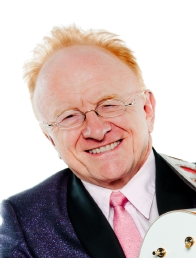
Discussion
No comments for “Interview: Peter Asher”